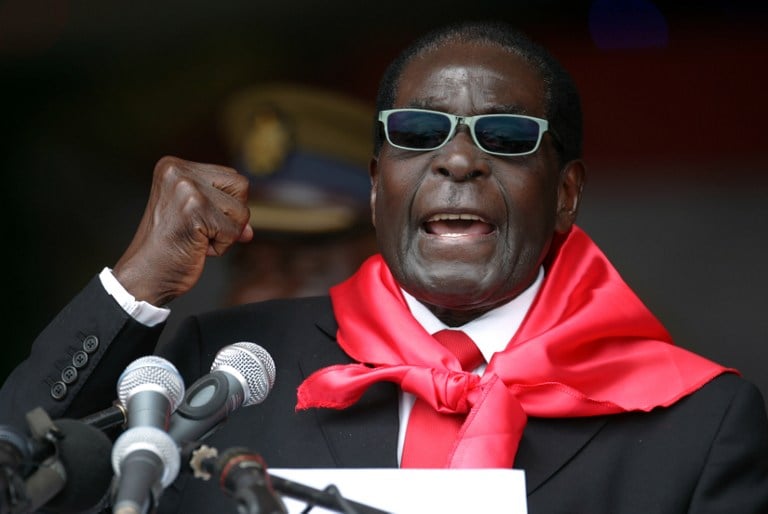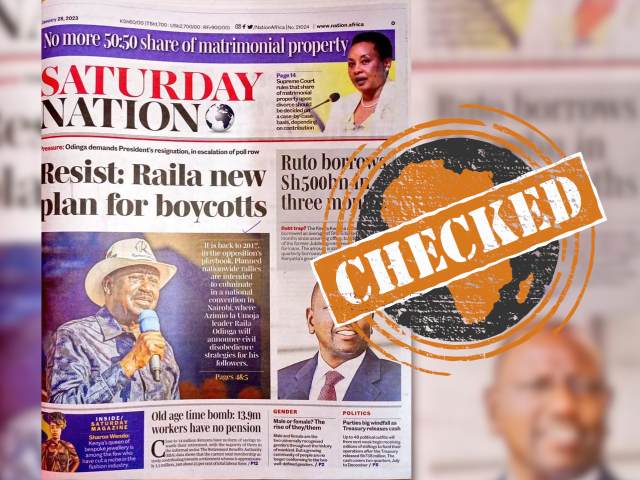Zimbabwe’s unemployment rate “of 85%” is a ticking time bomb Morgan Tsvangirai, the leader of the country’s opposition Movement for Democratic Change (MDC), recently said.
But how accurate is the 85% figure? Depending on the source, Zimbabwe’s unemployment rate has been estimated at as low as 4% and as high as 95%. In its 2013 election manifesto, President Robert Mugabe’s Zanu-PF party claimed unemployment levels stood at 60%.
The secretary-general of the Zimbabwe Congress of Trade Unions, Japhet Moyo, told a newspaper late in 2012 that the unemployment rate was between 80% and 90%. The country’s National Association of Non-Governmental Organisations (NANGO) suggested that overall unemployment in 2011 stood at 95%.
‘Do research yourself’

The MDC say that the figure cited by Tsvangirai was drawn from a study carried out by the party in October 2013 and “updated” in April 2014.
Spokesman Douglas Mwonzora told Africa Check that it showed that “formal unemployment has risen to over 85%”. He however failed to produce a copy of the research report despite numerous requests.
Zanu-PF spokesman Rugare Gumbo said the 60% estimate referred to in the party’s election manifesto “might have been accurate then, but things have changed”.
“You just have to come and do research yourself,” he added before abruptly ending the call.
Documents provided to Africa Check by the Zimbabwe Congress of Trade Unions as evidence of their 80% to 90% claim contained no data to support it.
Christopher Mweembe from NANGO said the organisation had taken the 95% estimate from the CIA World Factbook, an online database of country information and statistics published by the US Central Intelligence Agency. The website lists unemployment estimates of 80% (2005) and 95% (2009) for Zimbabwe, but does not provide references for the data. The site also cautions readers that: “[T]rue unemployment is unknown and, under current economic conditions, unknowable”.
In stark contrast, the World Bank website lists Zimbabwe’s unemployment rate at only 4%. It bases the figure on data compiled by the International Labour Organisation (ILO). But closer examination reveals that this “modelled estimate” draws on data that is a decade old.
5.4-million classified as 'employed'
A labour survey published in June 2011 by Zimbabwe’s agency for national statistics, Zimstat, put unemployment at 10.7%. This figure was based on an “expanded” definition of unemployment that included people who had given up looking for work. Figures based on a narrower “strict definition” of unemployment, which only counted people who were out of work but actively looking for a job, put unemployment at just 5.4%.
The 2011 survey provides the most recent official data on unemployment and was based on interviews conducted with Zimbabweans from 9,359 households. The Zimstat survey concluded that 6.1-million people aged 15 and older were “economically active”. (Zimbabwe’s population was estimated to be around 12-million at the time.)
As is the norm worldwide, the survey classified anyone who had worked for at least an hour – for cash or in kind – in the week preceding the survey as employed. As a result, around 5.4-million people fell into the “employed” category.
‘Unrealistically low unemployment rate’

According to the survey, most of the 5.4-million Zimbabweans worked in the informal sector (84%), with only 11% (606,000) in formal employment. But only about a quarter of all those counted as employed received some form of financial compensation for their work.
Like many African countries, Zimbabwe classifies subsistence farming as "employment", the manager for labour statistics at Statistics South Africa, Peter Buwembo, told Africa Check.
“This is reflected in the Zimbabwe figures where agriculture [both formal and subsistence] contributes 66% of total employment, while in South Africa [which does not class subsistence farming as employment] it contributes 4.4%,” Buwembo said.
When the 2011 Zimstat labour survey was conducted it was still an internationally accepted survey practice that people who "worked for their own consumption" could be classed as employed. But this changed last year, when the international body of labour statisticians decided that work “for own final use” should not be counted as employment.
“If all countries implement this, these unrealistically low unemployment rate figures in African countries will stop,” Buwembo said.
The high informal sector component adds to the “gross underestimate” of unemployment. Tina Koziol, an economist from the South African consultant group Econometrix, explained that it is difficult for researchers to accurately measure informal employment.
"Peoples' responses in the employment survey are subject to perceptions. There is likely to be a lack of common understanding and interpretation in respect to the type of work engaged.
"In formal employment structures, with formal job registration data, labour definitions and data entries are much more strict. This gives a more accessible and reliable data basis.
“Overall, the conclusion remains that there is an absence of reliable data on Zimbabwe’s employment statistics.”
Conclusion: The data is unreliable
Very little primary data exists on unemployment in Zimbabwe. Claims that the unemployment rate is 60%, 85%, 95% or even as low as 4% - as stated by the World Bank - are not supported by reliable, current data.
The most recent labour survey conducted by the country’s agency for national statistics - which pegged unemployment at 10.7% - is three years old and has been criticised as a "gross underestimate" of the problem. The vast majority of the Zimbabweans it classified as “employed” were in fact eking out a living as subsistence farmers.
Neither the Zimstats estimate, nor the much higher unemployment estimates of 60% or 85% or 95%, can be considered reliable. Given the parlous state of Zimbabwe's economy, unemployment levels are certainly extremely high. But to understand the scope of a problem and implement policies to help solve it you need to be able to quantify it.
The first step would be a regular survey of employment and unemployment levels in the country, conducted according to the latest accepted international practices. It is something that is urgently needed.
Edited by Anim van Wyk




Add new comment